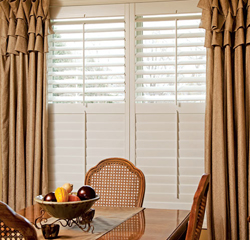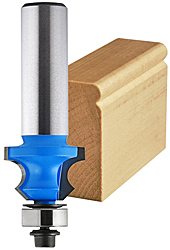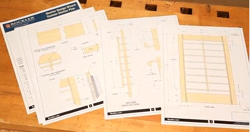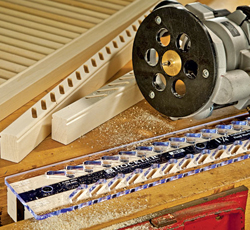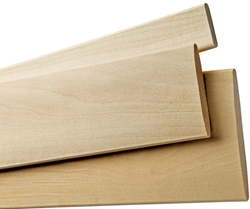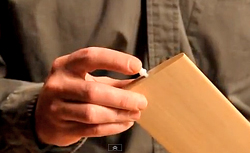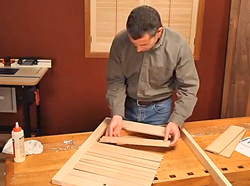
When Rockler’s product development team is brainstorming new ideas, sometimes a bit of masochism is taken into account.
“We often target woodworking’s ‘pain points’ that create roadblocks for our customers, as well as those circumstances where someone might look at a potential project and say, ‘Hmm, that looks too tough,’ says Steve Krohmer, Rockler’s vice president of new product development.
In February of last year, shutter-making seemed to be hitting that woodworking pain threshold for the team. At the time, Krohmer recalls there was almost nothing else on the market that would enable DIYers to build custom window shutters easily. Making them completely from scratch seemed complex; having the louvers move by way of a working control arm would only add difficulty to the process. A woodworker would also have to modify nearly every dimension in order to create shutters that would suit a variety of window sizes found on a typical home. Variables on top of variables stood in the way of making shutters a manageable woodworking project. What the process lacked on all levels was simplicity.
“So simplicity became our benchmark for creating our new Shutter-making System,” Krohmer says.
The team quickly realized that inventing a simplified approach to building window shutters would itself be a complicated project. Steve recounts that there was an overarching technical question: how to engineer a system that would provide exactness and accuracy for bringing multiple, interconnected parts together, particularly when some of those parts would also have to be moveable. Then there was the issue of connecting a control arm to a series of louvers. Staples are typically employed at these connection points, but they wouldn’t be easy to install. And, there was the matter of how to calculate all of the various part sizes: rails, stiles and louvers for windows whose dimensions might change from room to room or even from one wall to the next.
Rockler’s family of JIG IT® jigs provided a roadmap for meeting the first challenge: accuracy. “Our system of drilling repeatable and evenly spaced holes with a jig and self-centering bit was already there and has proven itself in other JIG IT® products, so we had a head start.” The team began with a shelf-pin drilling jig concept and reinvented it to create the stile drilling jig that forms the backbone of the new system. An acrylic plate is secured to a fixed aluminum fence that splits the plate into two sides. Each side has a series of matching holes to register a self-centering bit for boring the holes in two stiles at once. The jig registers the stiles for even alignment and, depending on whether you are making fixed- or moveable louver shutters, there are reference holes for drilling both shutter styles. Moveable louvers need a single centered hole drilled into each stile to accept a pivot pin; fixed louvers require drilling the stiles for two pins to lock the louvers in place. (For the smallest 1-1/4-in. fixed-louver shutter option, the stile jig is different. It serves as a routing template for forming short mortises to house the louver ends instead of securing them with pins.)
The same stile jig also drills a series of tiny holes in the control arms of moveable-louver shutters, so it serves an important dual purpose.
“We also invented a special louver drilling jig with adjustable stops. It allows you to bore pin holes in the ends of the louvers and into their edges for attaching the control arm fasteners.” Both jigs come with the system, along with three self-centering drill bits and index pins for indexing overly long stiles.
Part and parcel with the drilling jigs, Rockler has invented a special bead-and-chamfering router bit and a bit for milling the shaped louvers. These bits enable you to make shutters from any wood species you prefer for a custom look. The company also invented patent-pending metal clips that connect the control arms to the louvers instead of staples, “and all it takes is a needle-nose pliers to push the clips into their holes. Those tiny metal clips were a breakthrough in the development process, too,” Krohmer says.
But one of the bigger hurdles to clear was how to make it easy to calculate the part dimensions for a houseful of differently sized shutters. Here, the product development team turned to software instead of hardware.
“Since we engineered the shutter-making jigs in CAD, we could use those parameters to create a formula-driven Design Wizard that will compute the material list dimensions for any size shutter you want to make. All you need to do is enter the length and width of your window size, and the Design Wizard calculates a cutting list, shopping list and measured drawings for your particular project. It doesn’t get much simpler than that, and it’s free to use on our website.”
Krohmer adds that the effectiveness of the Design Wizard is a direct result of the product development team’s collaborative efforts as well as the fact that the Wizard and the jigs are are integrated. It’s the first time Rockler has offered an online software program of this kind.
But back to the primary goal of making shutter-building simple: you don’t have to plug in your router table and mill your own louvers and shutter-frame stock yourself if you don’t want to. “For some woodworkers, milling those louvers from scratch may seem like a lot more work, so we’re offering pre-made louvers in basswood. Basswood is the industry standard for store-bought shutters. It’s stable, easy to cut and takes paint well … This way, our customers can make the same type of shutters they see for sale. And, we estimate that you can save up to 75 percent making your own shutters with our pre-milled louvers over buying your shutters elsewhere.”
The new shutter-making program launched around January 1, and Krohmer says customers are happy with the results they are getting using the system. “It has done very well so far,” he adds.
But he seems equally happy with how comprehensive the system is and how effectively it solves a design problem. “Our product development team pulled all of the elements together to make this as seamless for our customers as possible. It’s one of the bigger projects we’ve tackled in recent years.” Steve says shutter-making formerly had a “fear factor” aspect to it for woodworkers, but the new integrated solution of drilling jigs and the Design Wizard should change this perception.
“As counterintuitive as it sounds, it’s so easy to design complication into a product, especially when it’s supposed to be the ‘be all, end all’ answer to a problem. We see other companies doing that all the time. That’s the opposite of what we’ve done here with the shutter-making program. I think our customers will appreciate a product that may do a little less but accomplish it simply and elegantly.”
And, the product development team hopes, without pain.
